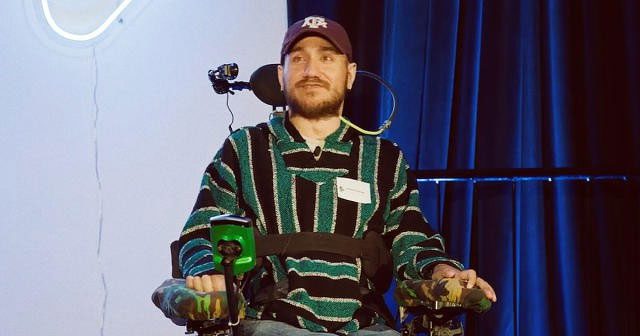In a recent blog post, Neuralink announced that the brain-computer interface implanted in a patient is experiencing mechanical issues.
The company founded by billionaire Elon Musk has developed a device utilizing technology known as brain-computer interface (BCI), designed to help patients with paralysis control activities through thought.

Neuralink brain implant device (Photo: Bloomberg).
The Neuralink device is branded as Link. It records the neural signals of the patient through 1,024 ultra-thin electrode threads implanted on the surface of the brain.
In January of this year, Link was implanted into the brain of 29-year-old patient Noland Arbaugh, who suffers from quadriplegia. Initially, Neuralink reported that the device was functioning very well.
However, in their latest post, the company revealed that some of the electrode threads had become detached from the brain tissue, resulting in the device not functioning normally.
According to brain specialists, the complications could stem from the electrode threads connecting to a device located within the skull rather than on the surface of brain tissue. Furthermore, Neuralink engineers may not have considered the extent of brain movement within the cranial cavity. Even a nod or sudden movement can affect the electrode threads.
Mr. Matt Angle, CEO of the brain implant company Paradromics, stated that typically, doctors place the brain implant directly on the brain tissue, where it moves “like a boat on water.” He noted that the detachment of the electrode threads from the brain is unusual.
Before implanting this device in Noland Arbaugh, Neuralink conducted extensive testing on animals. However, a potential issue is that because animals have smaller brains, the electrodes do not move as much as they do in humans, said Eric Leuthardt, a neurosurgeon at the Washington University School of Medicine in St. Louis.

Noland Arbaugh after receiving the Link device implant.
Neuralink stated that they have compensated for the detached electrode threads with software patches, “creating rapid and sustainable improvements, helping Noland control the device better than before.”
This report from Neuralink comes at a time when the company is seeking to implant its device in more patients. Any malfunction could cause delays in the approval process by the U.S. Food and Drug Administration.


















































